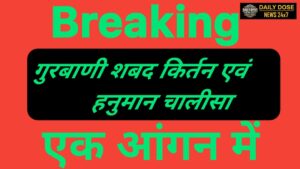How to follow a Cutting Diet for Weight Loss
Cutting is a growingly popular training method.
It’s a process of losing fat that exercise enthusiasts and bodybuilders employ to build as lean as possible.
Typically , it’s started just a few days before starting a serious workout routine that involves a weight reduction diet designed to build as much muscle as is feasible.
This article explains how you can follow a cutting diet for weight loss.
What is a cutting diet?
A diet known as a cutting diet is commonly used by bodybuilders and fitness enthusiasts for cutting body fat while maintaining muscle mass.
What makes it different from other weight loss regimens is that a diet that is cutting-edge is customized to every person, tends to be greater in protein and carbs, and should be supplemented with weightlifting.
A regular workout is crucial because it increases the strength of your muscles which helps to combat the loss of muscle after you have cut down on calories.
A cutting diet can last for 2-4 months, depending on the amount of fat you have before you start dieting. It’s typically scheduled around bodybuilding events in athletic events or times like holidays.
Summary
A cutting diet will make you as lean as is possible while still maintaining muscle mass.Read about https://uniquelifetips.com/workout-routine/ At website It’s usually done for about 2-4 months prior to the bodybuilding event or other events.
How to follow a cutting diet
A cutting diet is tailored to each individual , and will require you to determine your nutritional needs.
Calculate your calorie intake
Fat loss occurs when you are constantly eating less calories than you consume.
The number of calories you need to consume daily in order to shed pounds depends on your weight the size of your body as well as your lifestyle, gender and exercise levels.
In general, an average woman needs around 200 calories a day just to maintain her weight , however 1,500 calories per day to lose one pound (0.45 kilogram) of fat every week. A normal man requires around 2500 calories to maintain his weight, or 2,000 calories to lose the equivalent amount.
An even, steady pace of weight loss — for example, 1 pound (0.45 kilograms) or 0.5-1 percent or more of bodyweight per week — is best for a cutting-edge diet.
While a higher deficit in calories might help you lose weight faster, studies have been conducted to show that it increases your chances of losing muscle which isn’t ideal for this kind of diet.
Determine your protein intake
Maintaining adequate protein intake is crucial on a dieting plan.
Numerous studies have discovered that a diet high in protein may aid in losing weight by increasing you metabolism, decreasing your appetiteand preserving your the mass of lean muscle.
If you’re on a diet that’s cutting diet, it is essential to consume more protein than if you’re simply trying to maintain fitness or gain muscle. It’s because you’re consuming fewer calories while exercising frequently which will boost the requirement for protein.
A majority of research suggests that 0.7-0.9 grams of protein for each pound of human weight (1.6-2.0 grams per kg) suffices to keep muscle mass on a cutting diet.
For instance an 155-pound (70-kg) bodyweight person should eat 110-140g of protein each day.
Be aware of your fat consumption
Fat plays a crucial role in hormone production which makes it vital for a diet that cuts calories.
While it’s usual to reduce the amount of fat consumed on a diet lifestyle, not eating enough could affect the production of hormones such as testosterone and IGF-1, which aid in maintaining muscle mass.
For instance, studies show that reducing fat intake by 40% to 20% of total calories lowers the testosterone levels by an eminent but significant amount.
However, some research suggests that a decline in testosterone levels does not always lead to loss of muscle in the event that you eat enough carbs and protein.
Experts suggest that, when you follow this diet 15-30 percent of your calories ought to be from fat.
One gram of fat has 9 calories. That means that anyone on a diet containing 2,000 calories should consume 33-67 grams of fat every day, if they are on a cutting diet.
If you are a heavy exerciser at a high intensity, the lower part of that fat range may be the best option since it allows for higher amounts of carbs.
Know your intake of carbs
Carbohydrates play a vital role in keeping muscle mass you are on a diet cut.
Because your body tends to make use of carbs to boost energy instead of protein, consuming an enough carbohydrates could prevent the loss of muscle.
Furthermore, carbs can keep you on track during your workouts.
On a diet with a reduced-calorie component, carbohydrates should constitute the remainder of calories after you subtract proteins and fat.
Protein and carbs provide about 4 calories for every gram, while fat contains 9 calories per gram. After subtracting the protein and fat requirements from your total calorie intake subtract the remaining amount by 4. This will be able to tell you how much carbs you’re able to consume per day.
For example, a 150-pound (70-kg) person who is on the 2,000-calorie diet of cutting eat the equivalent of 110 grams in protein with 60g of fat. The remaining 1,020 calories (255 grams) are absorbed through carbs.
SUMMER
To plan a cutting diet it is important to calculate your protein, calorie as well as fat and carb requirements based upon your weight and other lifestyle factors.
Do meal times matter?
Meal timing is one strategy utilized for increasing muscle size the loss of fat and performance.
Although it could benefit athletes in competition, it’s just not essential for fat loss.
In fact, a number of studies indicate that endurance-based athletes can increase their recuperation by scheduling their meals and carb consumption in relation to exercise.
But, this isn’t essential to the cutting diet.
Instead, you should concentrate on taking whole foods and getting enough calories, protein, energy, and fat throughout the day.
If you’re constantly hungry eating a high-calorie breakfast could keep you fuller through the day.
A SUMMARY
Doing the right thing with your food isn’t vital to follow a strict diet, but can help endurance athletes with their training.
Cheat meals and Refeed days
Cheat days, or refeed day days are typically included in diets that are cutting.
Cheat meals are indulgences that are intended to ease the rigors of a specific diet Refeed days can increase your carb intake either once or twice per week.
A diet rich in carbs can provide several benefits, such as increasing the body’s stores of glucose that aid in exercising, and balancing hormones.
Studies have shown the possibility that a carb-rich day could enhance the levels of your fullness hormone called leptin. This may temporarily increase your metabolism.
While you might gain weight after cheat meal or refeed day, this is likely to be water weight , which is usually gone in the following few days.
However, it’s possible to overeat during these times and hamper your weight loss efforts. Moreover, these routines may lead to unhealthy behaviors, particularly in the case of emotional eating.
Thus, cheat days and refeed days aren’t required and should be planned out carefully.
A SUMMARY
Refeeding days and cheat meals can improve your mood in terms of exercise performance, as well as hormone levels, but they’re not required when you’re on a diet. They could hinder your progress if you don’t plan them properly.
Helpful tips for a cutting diet
Here are some helpful tips to keep fat loss up to date on a trim diet:
- Choose more fiber-rich foods. Fiber-rich carb sources like non-starchy veggies tend to be rich in nutrients, and they can help you stay fuller for longer while working towards a reduction in calories.
- Take plenty of water. Hydration can cut down your appetite . It also helps accelerate your metabolism.
- Try meal preparation. Preparing your meals ahead of time can save time, help you stay on track with your dietand help you avoid the temptation to eat unhealthy food.
- Avoid liquid carbs. Soft drinks, sports drinks, as well as other sugar-rich drinks lack micronutrients and could increase your hunger levels and aren’t as full as whole foods that are high in fiber.
- Have a look at cardio. If used in conjunction with weightlifting, aerobic exercise -particularly high-intensity cardio — can increase your fat loss.
SUMMER
To make the most of a cutting-edge diet consider drinking plenty water, eating foods that are high in fiber and engaging in cardio in addition to other strategies.
Bottom line
Cutting diets are designed in order to lose the most fat while maintaining lean mass.
This plan involves calculating calories the protein, fat and carbs needs, based upon your weight and lifestyle. You’re only meant to follow it for a couple of months prior to an event and you should incorporate it into weightlifting.
If you’re considering this weight loss regimen for athletes, ask your health professional or trainer in order to determine whether it’s appropriate for you.












